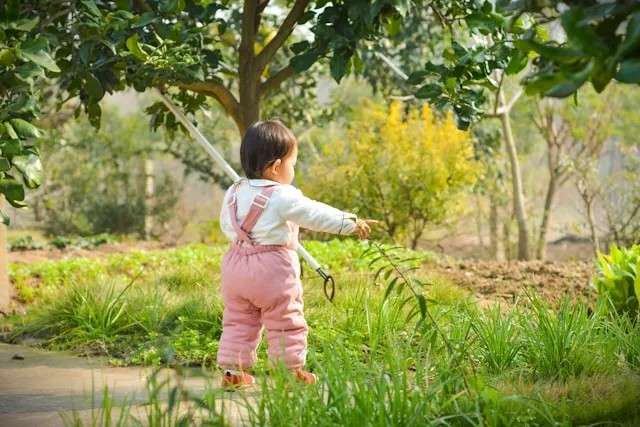A child’s development isn’t shaped by genetics alone—the environment around them plays a vital role in how they grow, learn, and interact with the world. From the comfort of a stable home to interactions with family, peers, and the wider community, every experience leaves an impact on a child’s cognitive, emotional, and social development.
The physical environment, such as safe spaces to play, access to nutritious food, and exposure to nature, also contributes to brain growth and overall well-being. Even the way children engage with technology and media can influence their attention, learning, and social skills.
Understanding the key environmental influences on child development helps parents and caregivers create nurturing, supportive spaces that maximize a child’s potential. This guide explores the most important factors and offers practical tips for fostering a positive environment where children can thrive.
Table of Contents
Understanding Environmental Influences on Child Development

Environmental influences are the physical, social, and emotional surroundings that shape a child’s growth and learning. From the moment a child is born, these factors interact with their natural abilities to guide cognitive, emotional, and social development.
Key points to understand:
- Early Experiences Matter: Positive experiences in the first years of life, such as responsive caregiving, safe play, and exposure to language, significantly impact brain development.
- Interconnected Factors: A child’s environment isn’t limited to the home. Schools, neighborhoods, peers, and cultural settings all contribute to shaping personality, behavior, and learning abilities.
- Plasticity of the Brain: Children’s brains are highly adaptable. With the right support and nurturing, even children who face challenging environments can develop resilience and thrive.
By understanding how environmental factors influence development, parents and caregivers can make informed choices that create nurturing, supportive spaces for children to grow into healthy, well-rounded individuals.
Family and Home Environment

The home is the first environment a child experiences, and it has a profound impact on their development. A stable, nurturing home can foster emotional security, cognitive growth, and social skills, while instability or neglect can create challenges.
Parenting Style and Emotional Support
- Warm, responsive parenting helps children feel safe and valued.
- Encouraging curiosity, listening actively, and showing affection promotes emotional intelligence and confidence.
- Example: Reading bedtime stories daily strengthens language skills and emotional bonding.
Household Stability
- Consistent routines, predictable schedules, and a safe living environment provide a sense of security.
- Reducing conflicts and maintaining household stability helps children focus on learning and exploring their surroundings.
Resources and Learning Opportunities
- Access to books, educational toys, and stimulating activities encourages curiosity and cognitive growth.
- Example: Simple activities like sorting shapes, drawing, or counting objects at home can enhance problem-solving skills and fine motor development.
✨ Parent Tip: Small daily actions—like praising effort, creating routines, and providing age-appropriate learning materials—can dramatically influence a child’s development over time.
Social and Peer Influences

A child’s social environment extends beyond the home, shaping how they interact with others, manage emotions, and develop important life skills. Positive social interactions can boost confidence, empathy, and communication abilities.
Interaction with Siblings and Peers
- Playing and communicating with siblings and peers helps children learn sharing, cooperation, and conflict resolution.
- Example: Group play encourages problem-solving and negotiation skills.
Community and Neighborhood
- Safe parks, playgrounds, and community centers provide opportunities for exploration, physical activity, and social engagement.
- Being part of a supportive neighborhood helps children develop a sense of belonging and security.
Cultural and Societal Values
- Exposure to cultural norms, traditions, and community activities shapes behavior, values, and social understanding.
- Example: Participating in local festivals or community events teaches respect, teamwork, and social etiquette.
✨ Parent Tip: Encourage your child to interact with peers regularly and provide opportunities to engage in safe community activities. Social connections are essential for building emotional resilience and communication skills.
Physical Environment
The physical surroundings in which a child grows play a crucial role in their overall development, including cognitive, motor, and emotional growth. A safe, stimulating, and healthy environment supports exploration and learning.
Nutrition, Sleep, and Physical Activity
- Proper nutrition fuels brain development and overall growth.
- Consistent sleep routines support memory, attention, and emotional regulation.
- Regular physical activity enhances motor skills, coordination, and healthy body development.
- Example: Active playtime outdoors strengthens muscles and encourages curiosity about the world.
Exposure to Natural vs. Urban Environments
- Time spent in nature promotes creativity, reduces stress, and improves attention.
- Access to green spaces and fresh air contributes to both physical and cognitive health.
- Urban settings with safe play areas can offer similar benefits if properly designed.
Safe and Stimulating Spaces
- Age-appropriate toys, soft play mats, and child-proofed areas allow safe exploration.
- A clutter-free, organized environment reduces stress and helps children focus on learning activities.
✨ Parent Tip: Create a balance of safe indoor and outdoor spaces, provide varied play materials, and ensure routines for sleep and nutrition to maximize development.
EXTRA -If you want to learn more about UK Summer Baby Health Guide, please visit this article.
Technology and Media Exposure

In today’s digital age, technology is an unavoidable part of a child’s environment. While it can offer learning opportunities, excessive or inappropriate use can impact attention, social skills, and overall development.
Age-Appropriate Screen Time
- Limit screen time according to age guidelines (e.g., the American Academy of Pediatrics recommends minimal screens for children under 2).
- Educational apps and programs can support learning when used in moderation and supervised by parents.
Balancing Digital and Real-World Interaction
- Encourage real-world play and face-to-face interactions to develop communication and social skills.
- Example: After a short educational video, engage your child in a related hands-on activity like drawing, building blocks, or storytelling.
Parental Involvement and Guidance
- Co-viewing and discussing content helps children understand and process what they see.
- Set boundaries and consistent rules around media use to prevent overexposure.
✨ Parent Tip: Technology can be a tool for learning, but it should complement—not replace—interactive play, reading, and social interaction for optimal child development.
Strategies to Create a Nurturing Environment
Creating a nurturing environment is essential for supporting a child’s cognitive, emotional, and social development. Small, intentional actions by parents and caregivers can make a lasting impact.
1. Optimize the Home Environment
- Keep spaces safe, organized, and stimulating.
- Provide age-appropriate toys, books, and learning materials.
- Example: A reading corner with colorful books encourages language development and curiosity.
2. Encourage Social Interaction
- Arrange playdates, group activities, or community engagement.
- Teach sharing, empathy, and cooperation through guided interactions.
3. Promote Outdoor and Physical Play
- Encourage daily outdoor activities to support motor skills and brain development.
- Nature walks, playground visits, or simple backyard games stimulate curiosity and exploration.
4. Establish Consistent Routines
- Predictable schedules for meals, play, and sleep create a sense of security.
- Routines reduce stress and help children focus on learning and development.
5. Support Emotional Wellbeing
- Show love, patience, and responsiveness to a child’s needs.
- Encourage expression of feelings and model healthy coping strategies.
6. Balance Technology Use
- Use educational media in moderation and combine it with interactive, real-world activities.
✨ Parent Tip: Small, consistent efforts—like daily reading, outdoor play, and meaningful social interaction—can create an enriching environment that supports lifelong development.
you can read moe about Environmental Influences on Child Development by visiting this article
Conclusion & Call-to-Action
A child’s environment plays a pivotal role in shaping their growth, learning, and overall development. From the home and family dynamics to social interactions, physical surroundings, and even technology exposure, each element contributes to cognitive, emotional, and social outcomes. By creating a safe, nurturing, and stimulating environment, parents can give their children the best possible foundation for success.
✨ Key Takeaway: Thoughtful attention to a child’s surroundings—through structured routines, enriching experiences, and emotional support—can profoundly influence their development and well-being.
👉 Call-to-Action: Start evaluating and enhancing your child’s environment today. Introduce positive routines, encourage outdoor and social activities, and provide safe, stimulating spaces. Share this guide with other parents to help more children thrive in nurturing environments.






